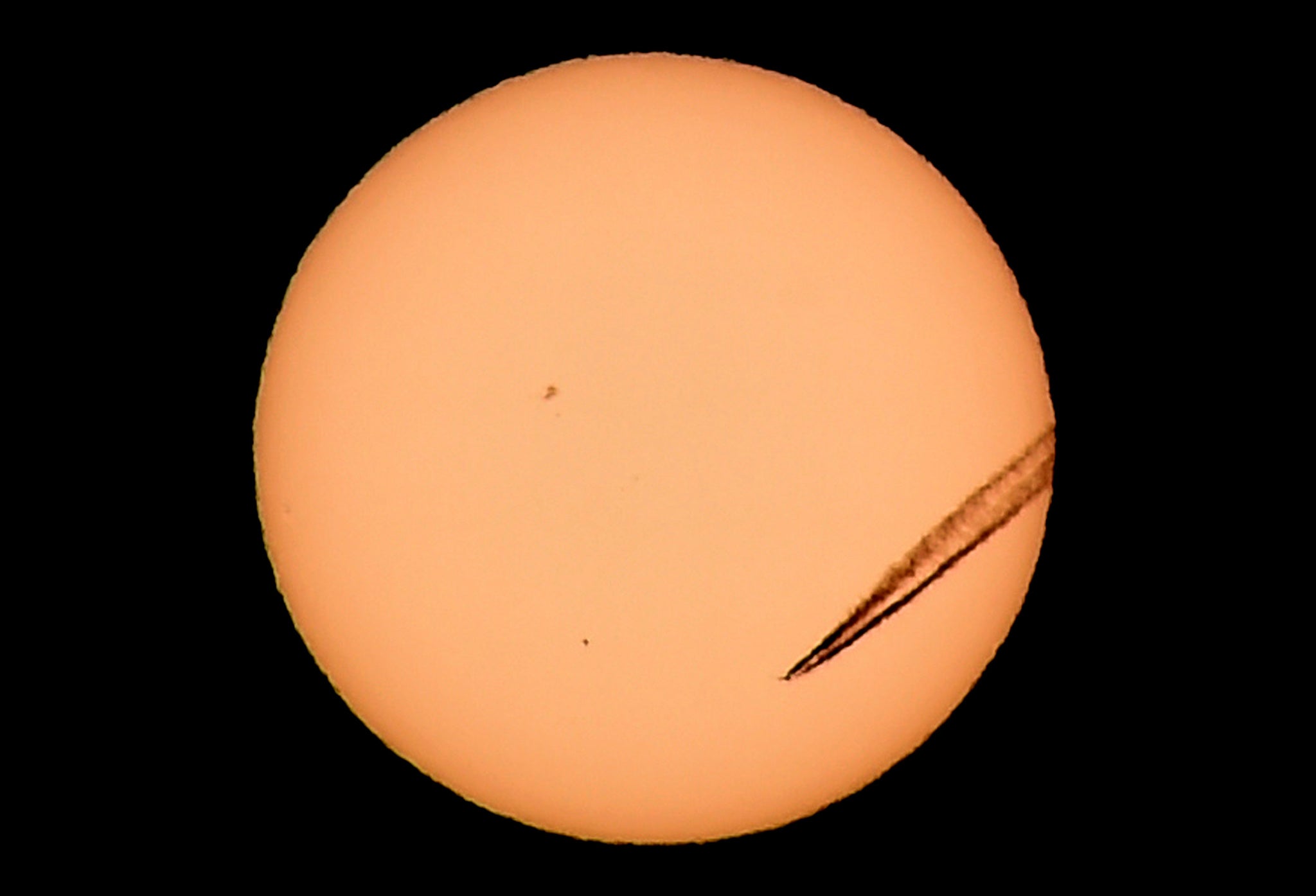Transit of Mercury: Stargazers watch planet move in front of the Sun and see just how small we are
Transits have historically been used as a way of figuring out our place in the solar system – and are now used as a way of mapping out the huge scale of the universe

Your support helps us to tell the story
From reproductive rights to climate change to Big Tech, The Independent is on the ground when the story is developing. Whether it's investigating the financials of Elon Musk's pro-Trump PAC or producing our latest documentary, 'The A Word', which shines a light on the American women fighting for reproductive rights, we know how important it is to parse out the facts from the messaging.
At such a critical moment in US history, we need reporters on the ground. Your donation allows us to keep sending journalists to speak to both sides of the story.
The Independent is trusted by Americans across the entire political spectrum. And unlike many other quality news outlets, we choose not to lock Americans out of our reporting and analysis with paywalls. We believe quality journalism should be available to everyone, paid for by those who can afford it.
Your support makes all the difference.Some lucky stargazers have managed to see one of the sky’s most stunning sights – the transit of Mercury, as it moves across the front of the Sun. But at the same time they were watching one of the most historically important events that we can see from Earth.
The event happens about 14 times each century and is one of the few times that we can see Mercury directly. It appears as just a tiny black spot on the face of the Sun, since despite Mercury’s huge size – it is 3,000 miles in diameter – it is dwarfed by our star.
And it’s that image of the planet that allowed the event to become so important. Through history, astronomers have used them as a way to calculate the true scale of the solar system and our place within it – transits like that of Mercury provided us with one of the first ways of knowing just how small we are.
But they’ve not lost that importance. Nowadays, scientists can use the events to find solar systems far from our own – and, just as astronomers once used the planets to understand our place in the solar system and its size, they can now do the same with the universe.
For all the grandeur, many people wouldn’t – or shouldn’t – have been able to see it at all. People were advised not to look straight at the Sun to see it, and only watch events with the right equipment.
Since seeing a transit means looking at the Sun, it can be incredibly dangerous and can lead to people losing their eyesight. And since Mercury is so small in front of the star, it requires a telescope – making it even riskier than normal.
Instead, stargazers were encouraged to head out to public events where people could make use of telescopes with special solar filters that keep out the dangerous brightness of the Sun.
Luckily for those unable to make it, Nasa and the European Space Agency held events to let people watch through their telescopes over the internet. Some of those images even came from space – helping avoid any potential problems caused by clouds.
Join our commenting forum
Join thought-provoking conversations, follow other Independent readers and see their replies
Comments